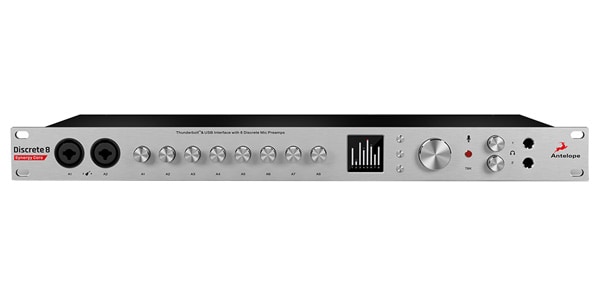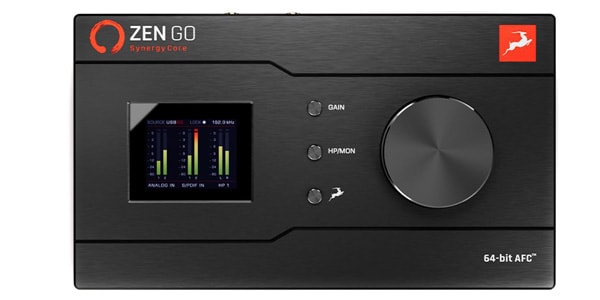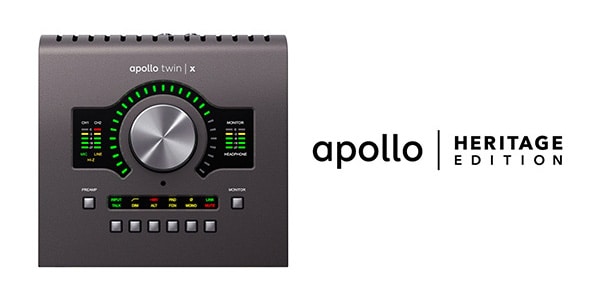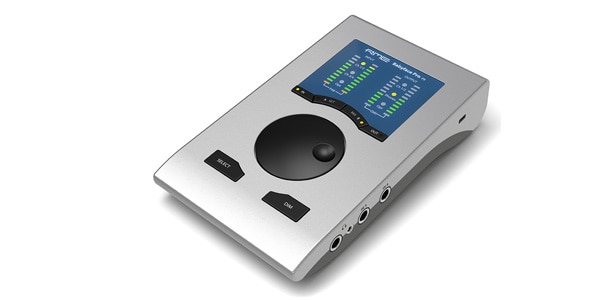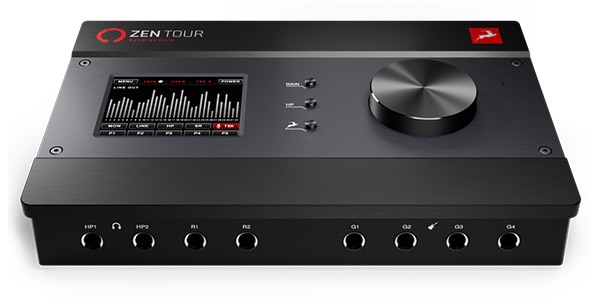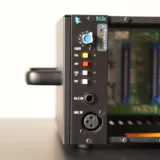This is a review of ANTELOPE ZEN GO (´◔౪◔)◞
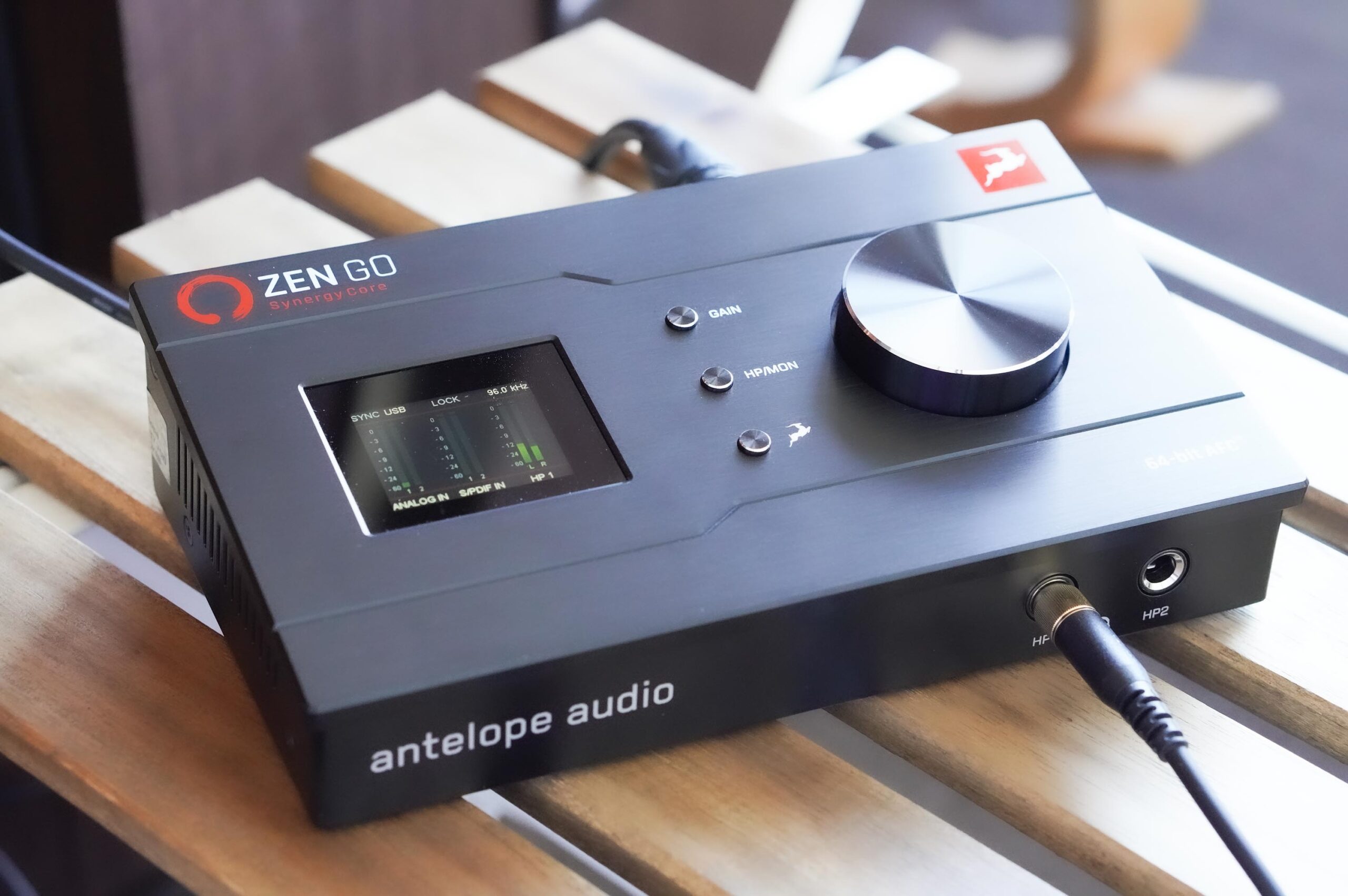
As I had pre-ordered it, and it arrived almost as soon as it was released!
ANTELOPE’s 2ch desktop type AIF!
The Discrete 8 Synergy Core was very good, so I have high expectations for this one too.
I also made a microphone recording sound source for comparison viewing (´◔౪◔)◞
Can it be a competitor to UA and RME despite its low price?
Please read to the end and make your decision( ・ὢ・ )!
What is ANTELOPE ZEN GO?
In recent years, ANTELOPE has been releasing full-scale high-end audio interfaces.
Their popularity is growing rapidly in Japan too!
ANTELOPE AUDIO / Discrete 8 Synergy Core サウンドハウス
However, there was no 2-channel desktop type product yet.
This is the one with the greatest need in terms of Computer Music.
ANTELOPE AUDIO / Zen Go Synergy Core サウンドハウス
And now, finally, a 2-channel type!
And the price is much more reasonable than its competitors UA and RME.
UNIVERSAL AUDIO / APOLLO TWIN X / DUO Heritage Edition サウンドハウス
If Zen Go’s sound quality and features are comparable, then it’s quite an innovative product.
I have written a detailed comparison of these three companies in a separate article, and the quality of all of them is very good (`・ω・´)
The only difference is the level of difference in the choice depending on the user’s purpose of use and sound preference.
I personally like RME and UA, but I also like ANTELOPE so much that I ended up buying their new products as well.
Is the Zen Go as good as the higher-end models in terms of features and sound quality?
This is the part I’m most curious about!
I’m sure you’ll agree.
Open the box!
This is a review of the actual product.

Box.

ANTELOPE is very particular about whether the boxes of their products are unopened or not.
I found this sticker on the box of one of their microphones.
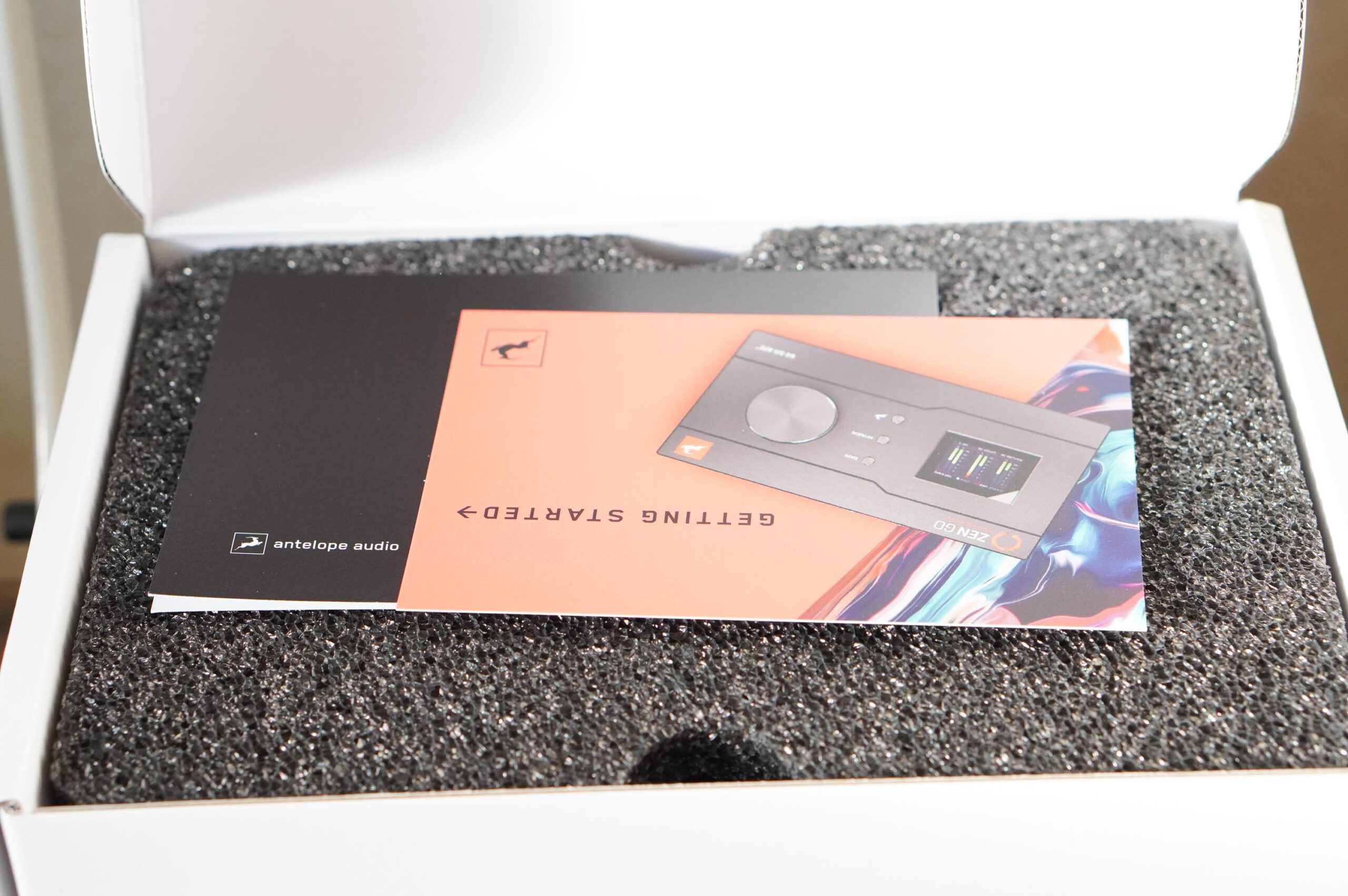
Cut the seal and open it !
The warranty card and other information is at the top.
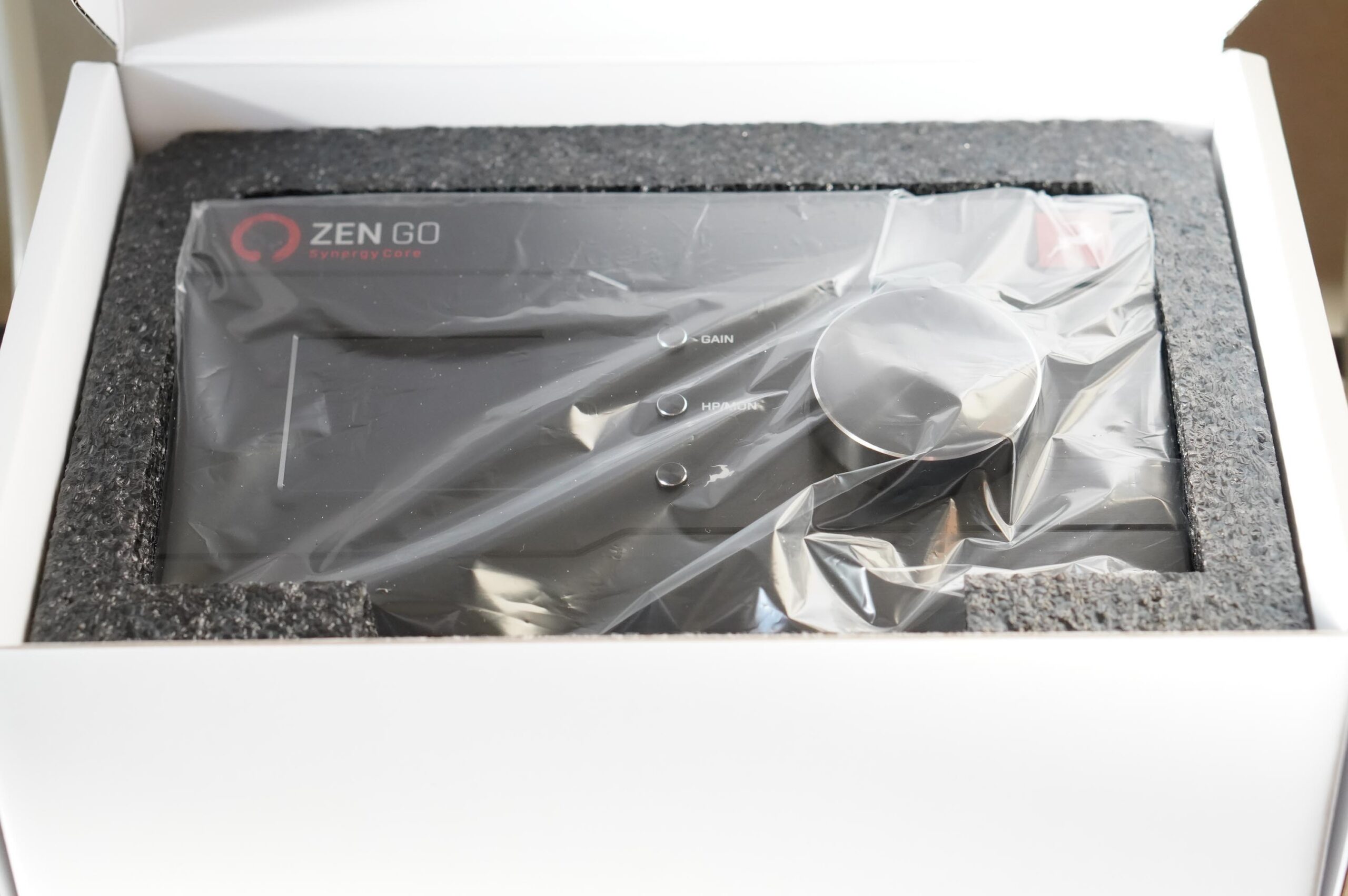
It’s here! The main body!

It’s surprisingly heavy.
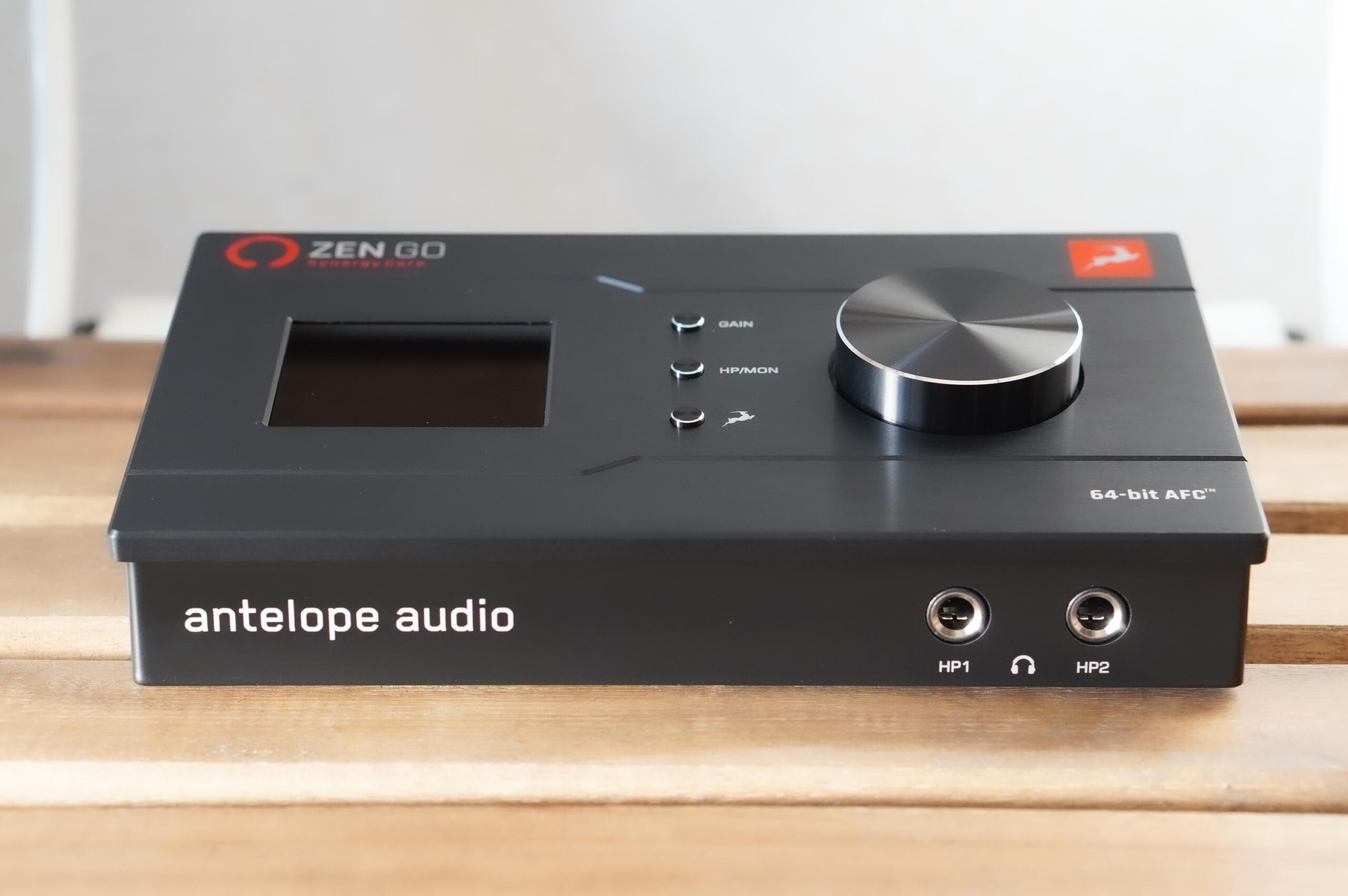
Oh, wow! So chic and cool!
It looks just like ZEN TUOR.
ANTELOPE AUDIO / Zen Tour Synergy Core サウンドハウス
This one is quite expensive( ・ὢ・ )
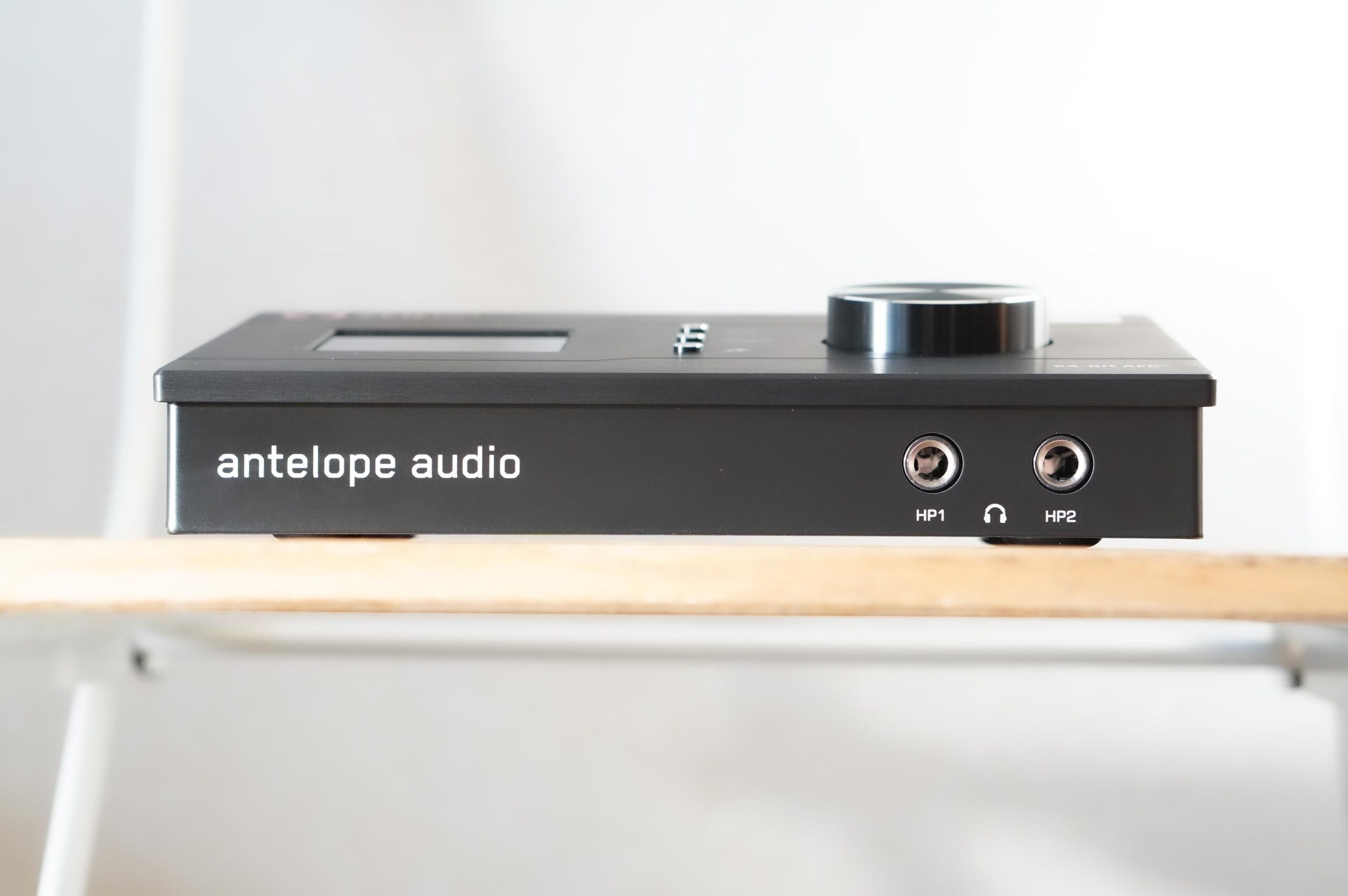
Two headphone jacks on the front.
This is one channel more than the RME or UA desktop type.
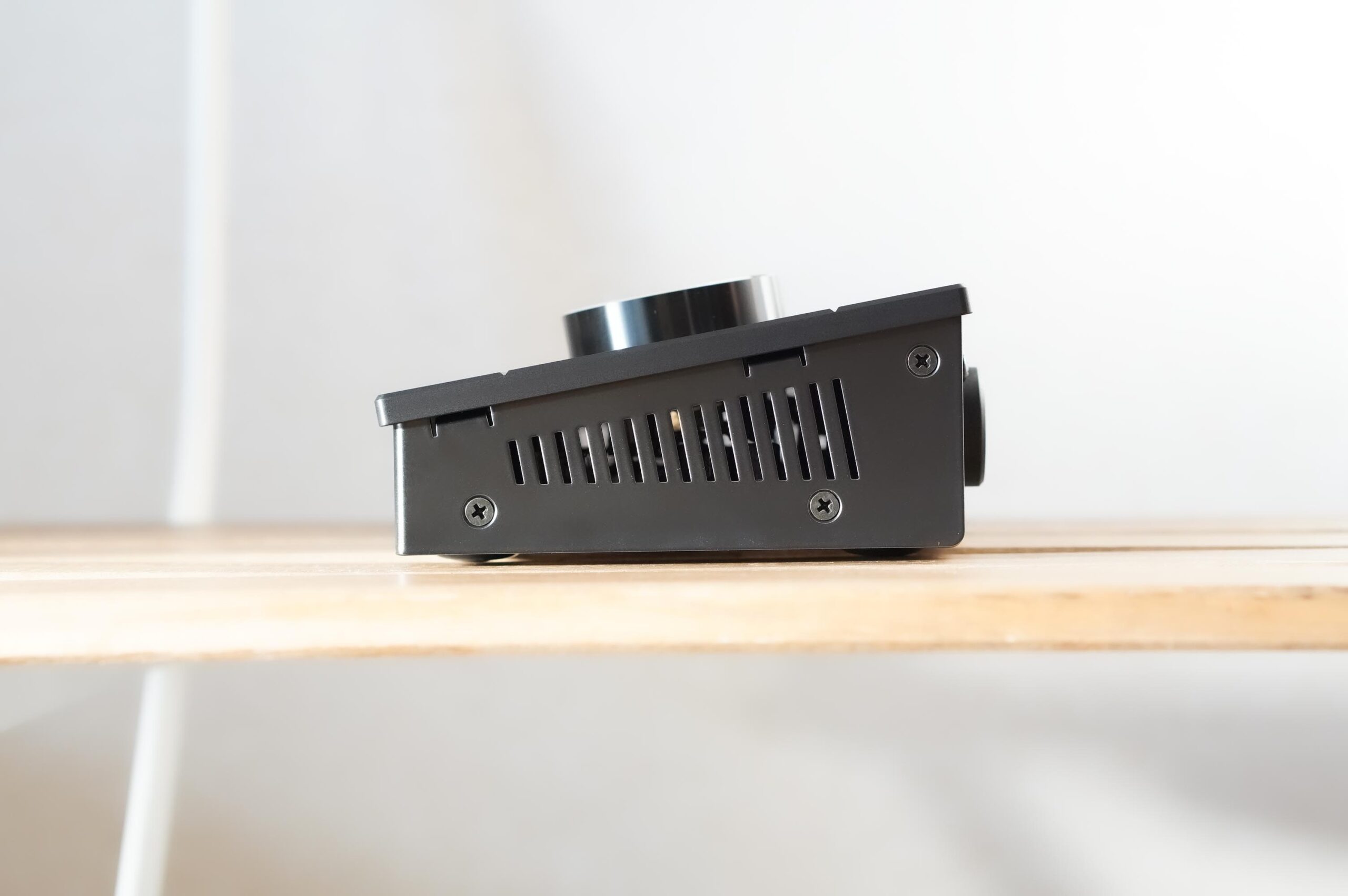
There is a groove on the side for heat exhaust. The depth is short.

Back side.
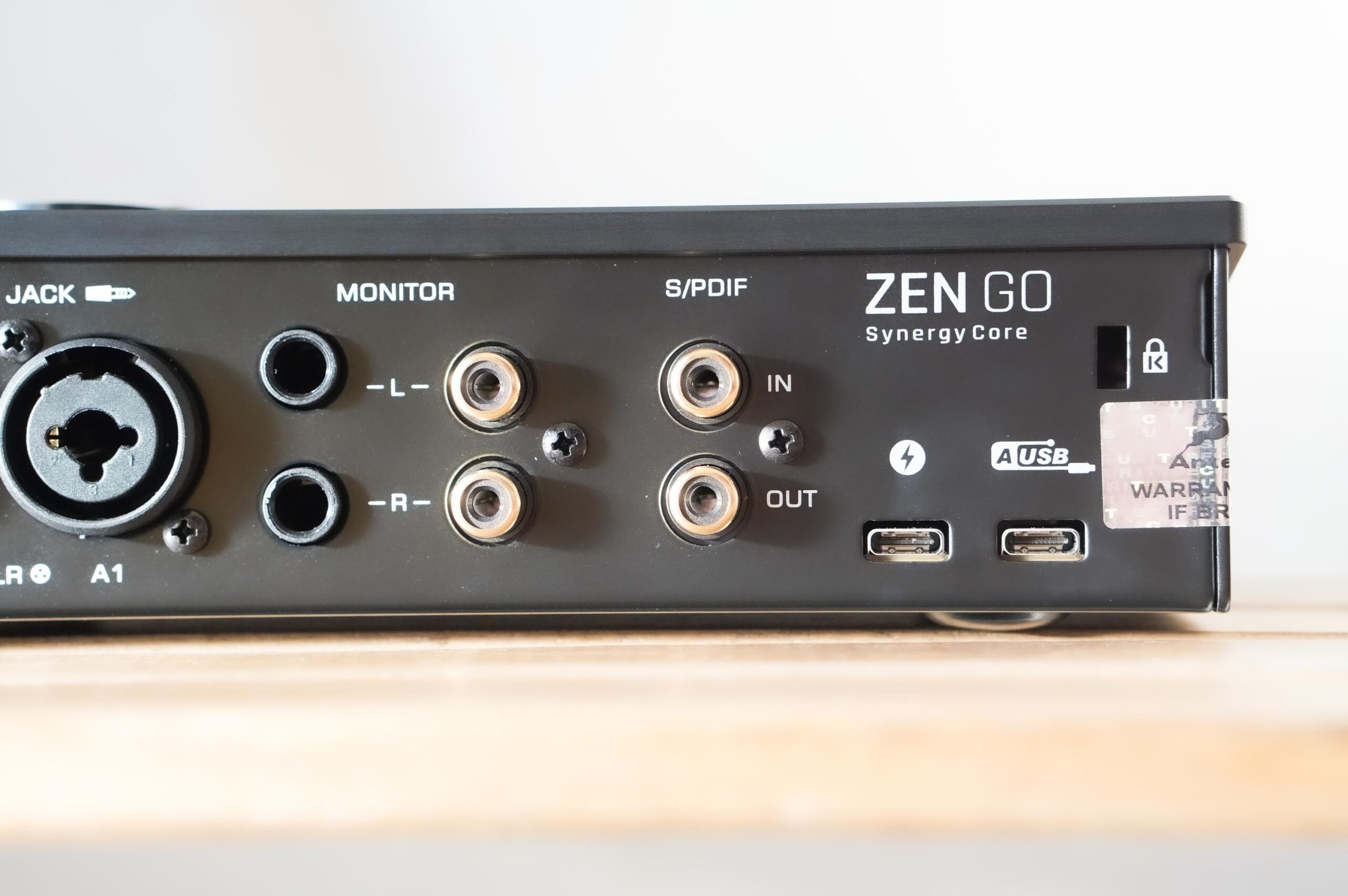
The connection to the PC is made via the USB-C one.
The monitor out has two patterns, one with a phone jack and the other with RCA jacks.
The number of channels can be increased to a total of 4in/8out with digital connection.
But basically, 2in2out.
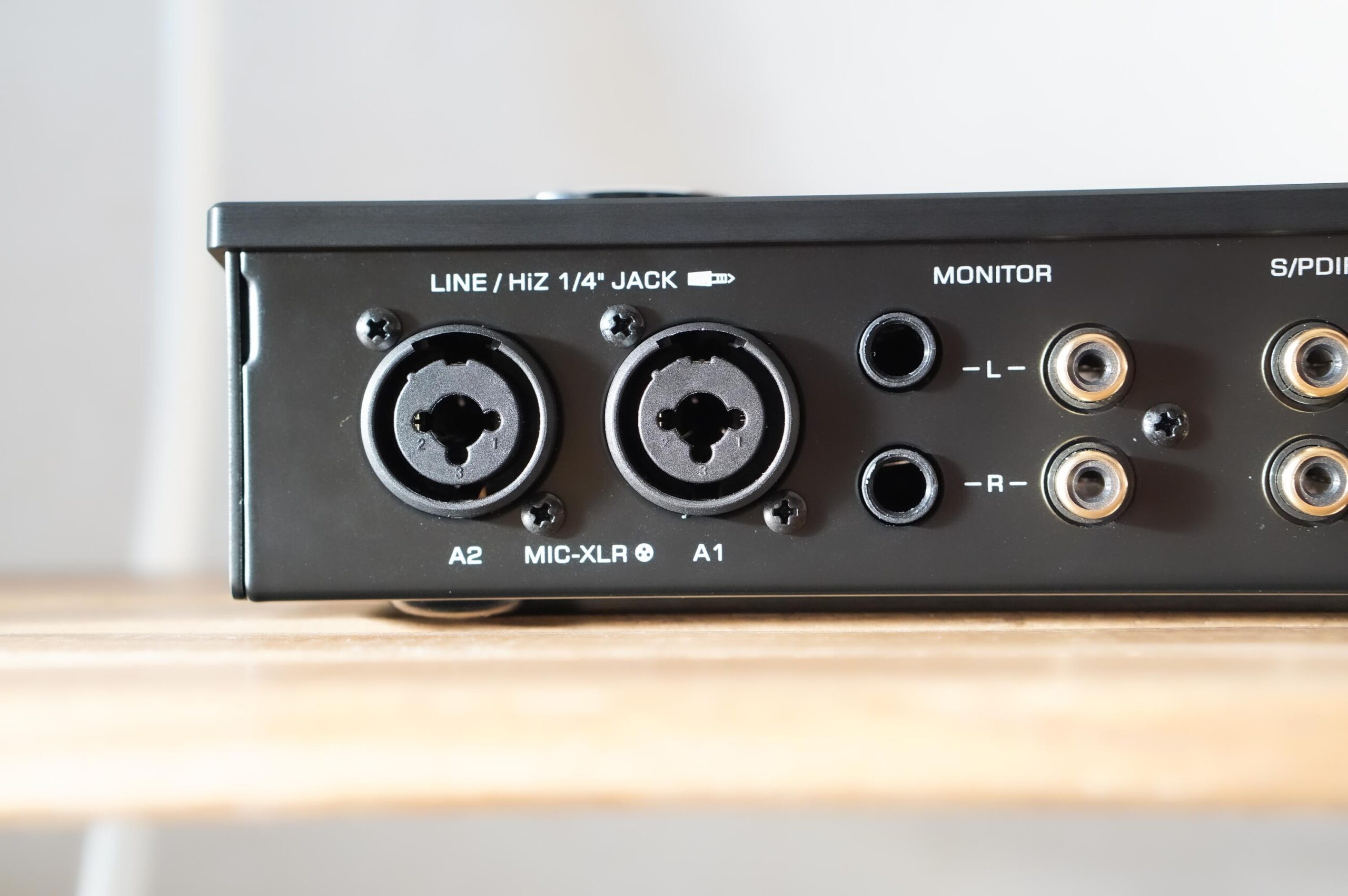
The input is an XLR and phone combo jack.
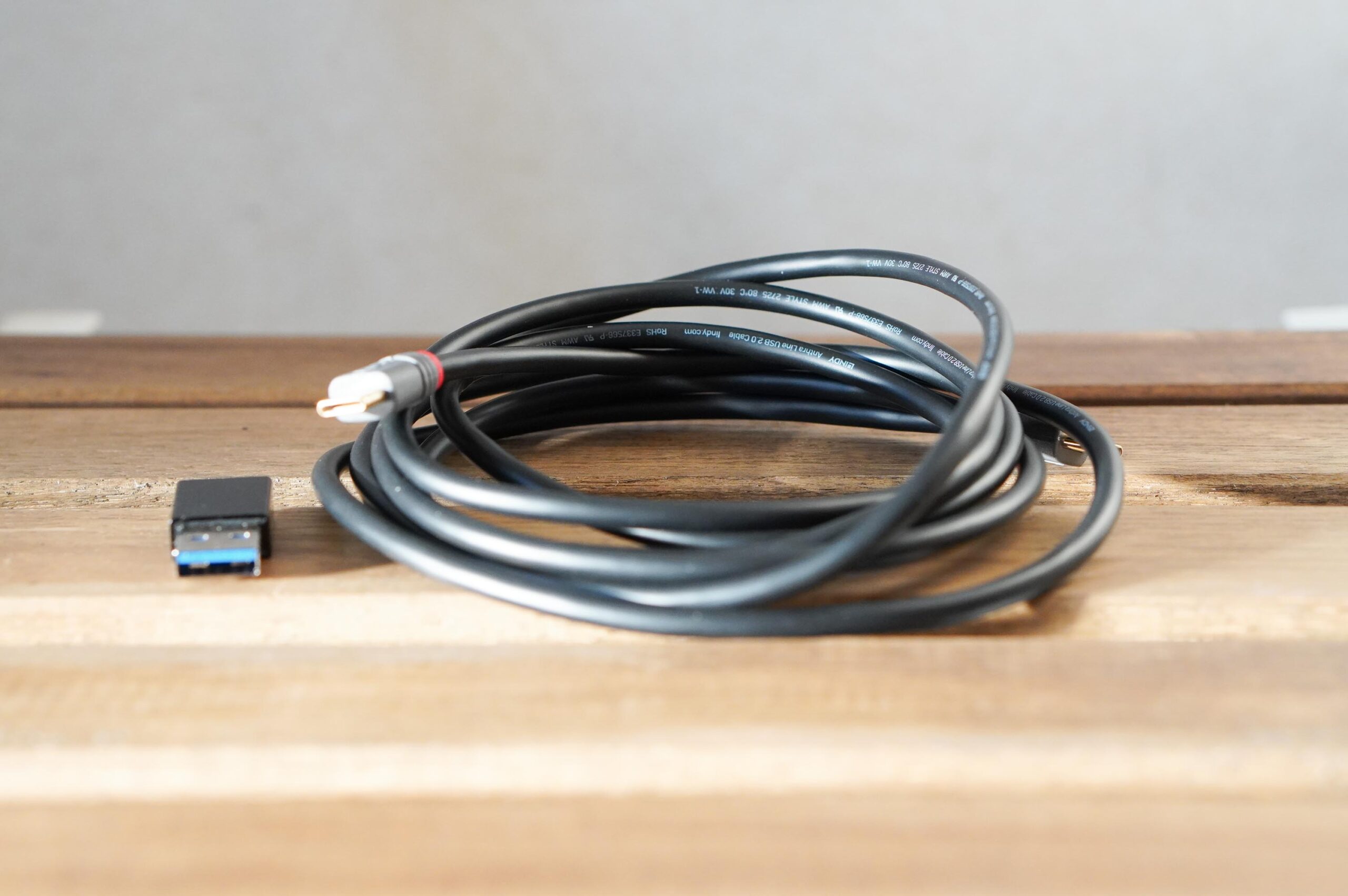
USB cable included in the kit.
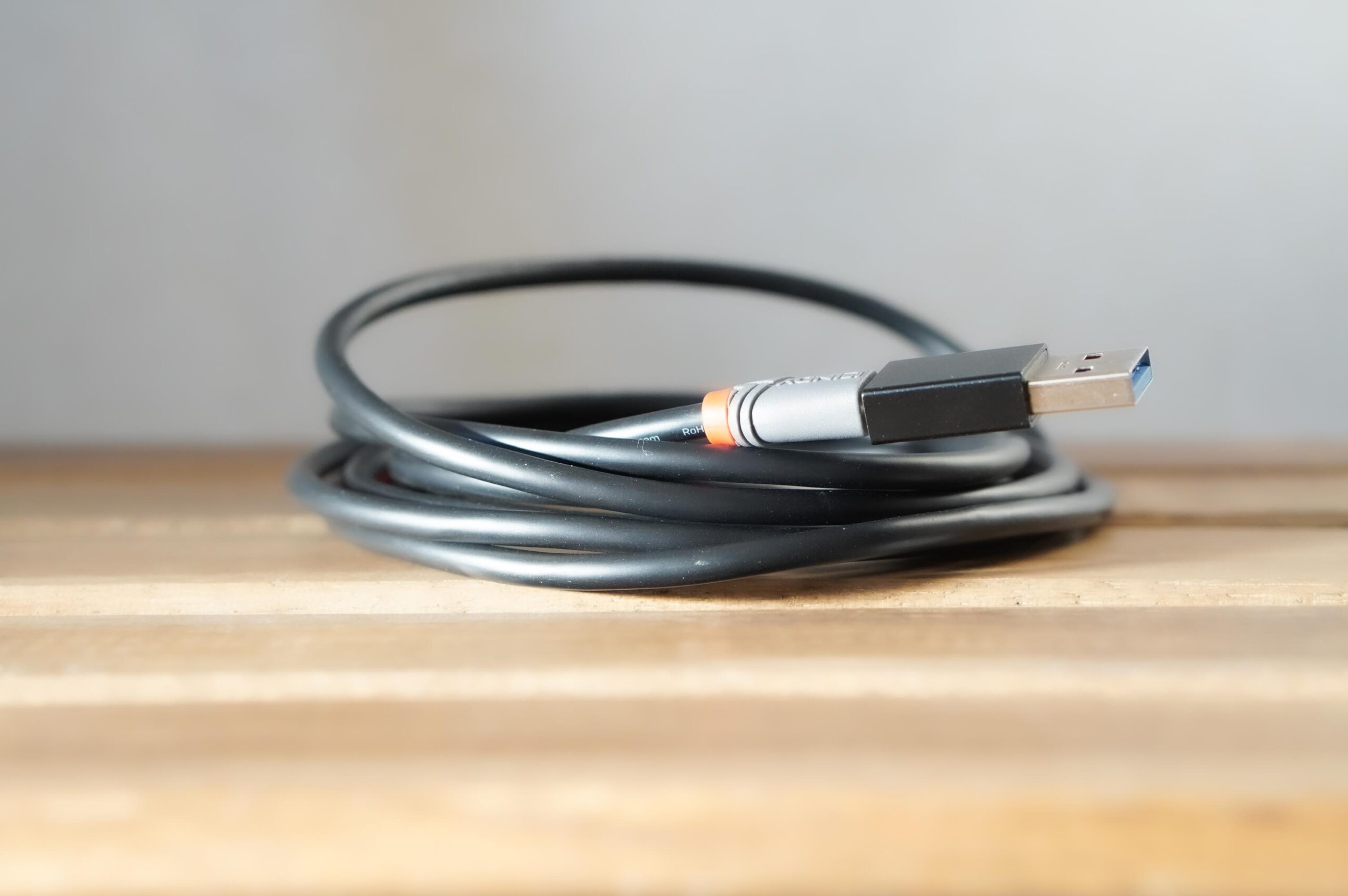
It comes with a connector to convert it to USB type A.
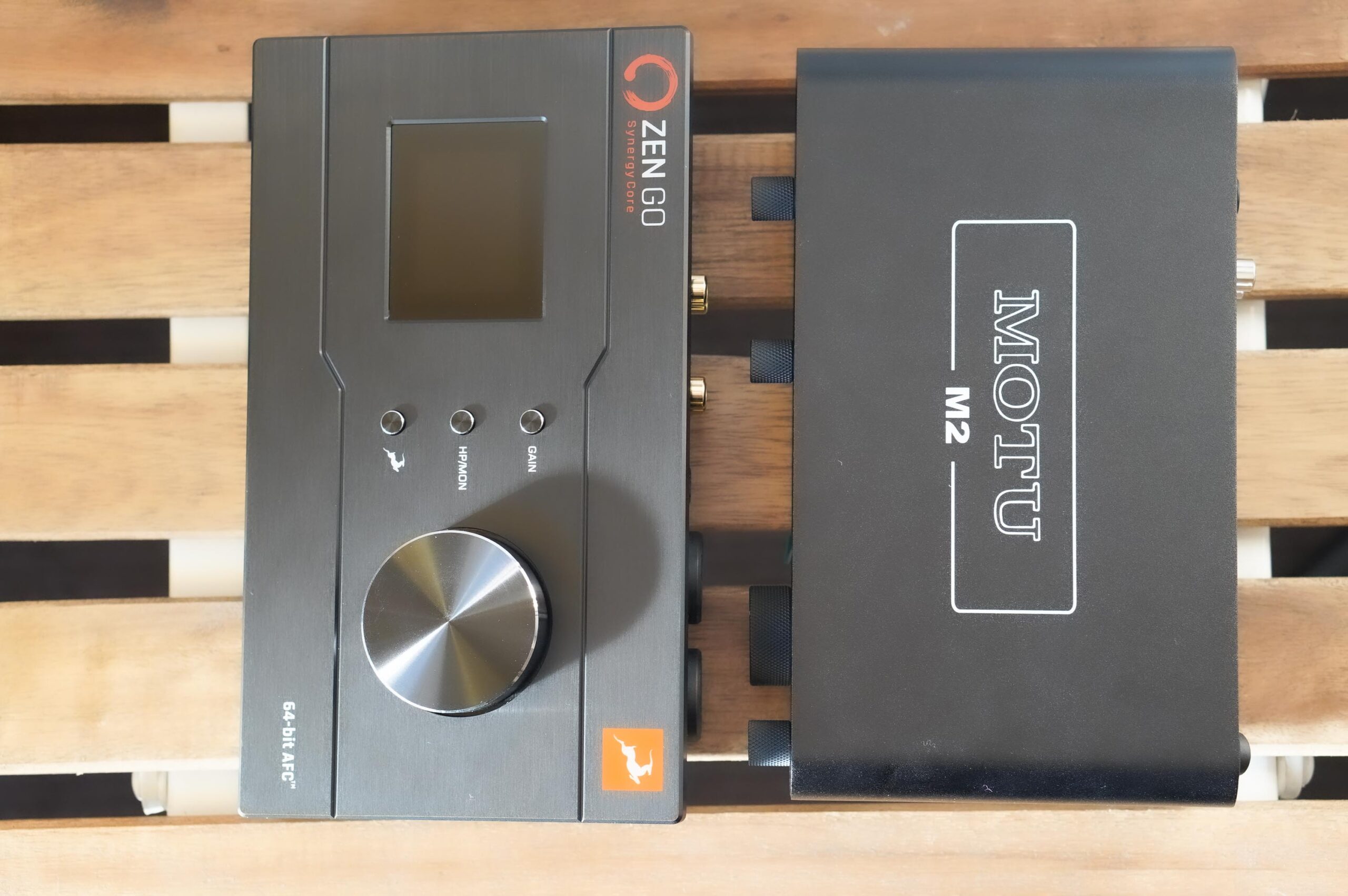
It was about the same size as the MOTU M2.
It also feels about the same as the RME Babyface Pro FS.
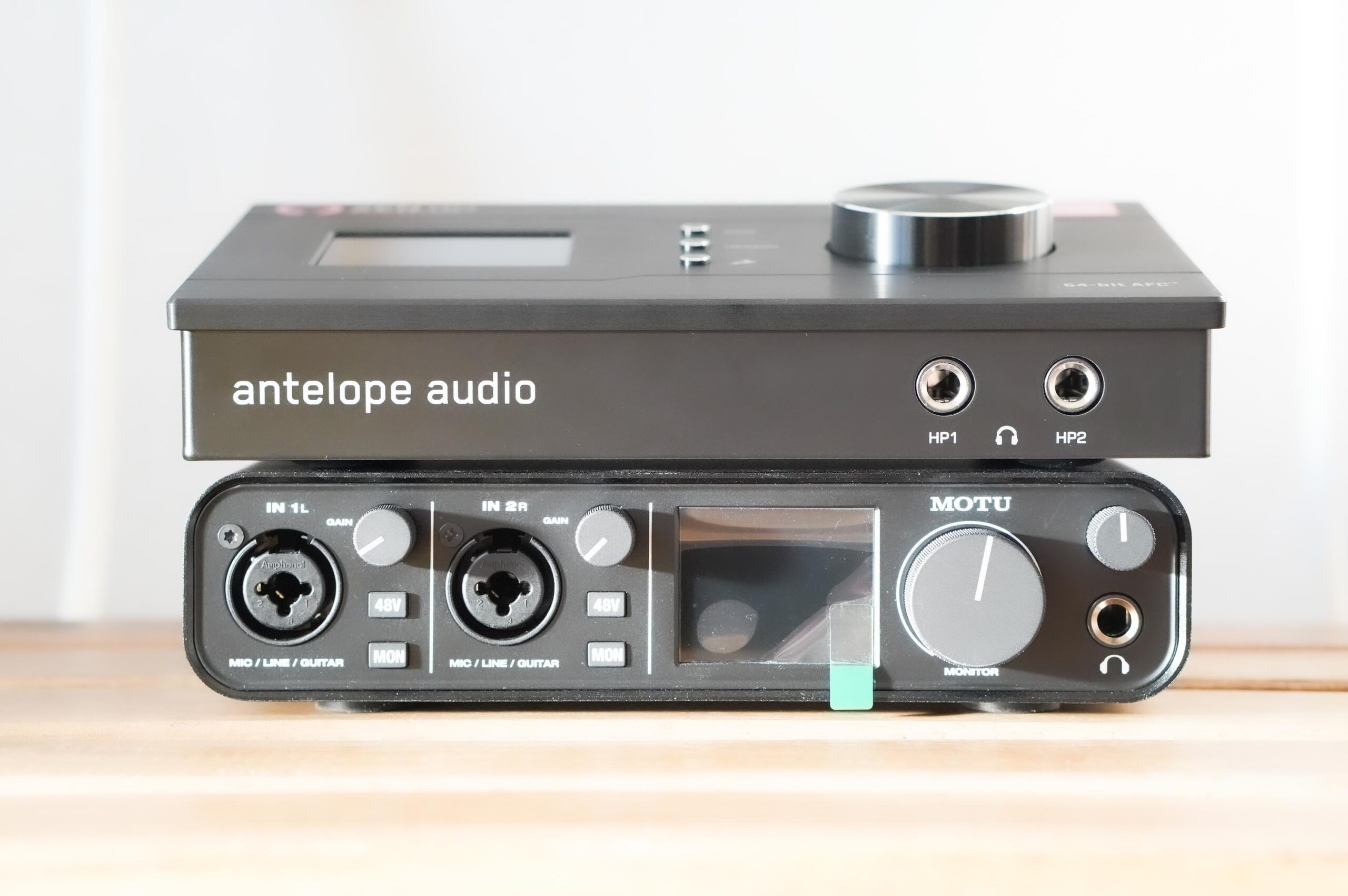
The height is almost the same.
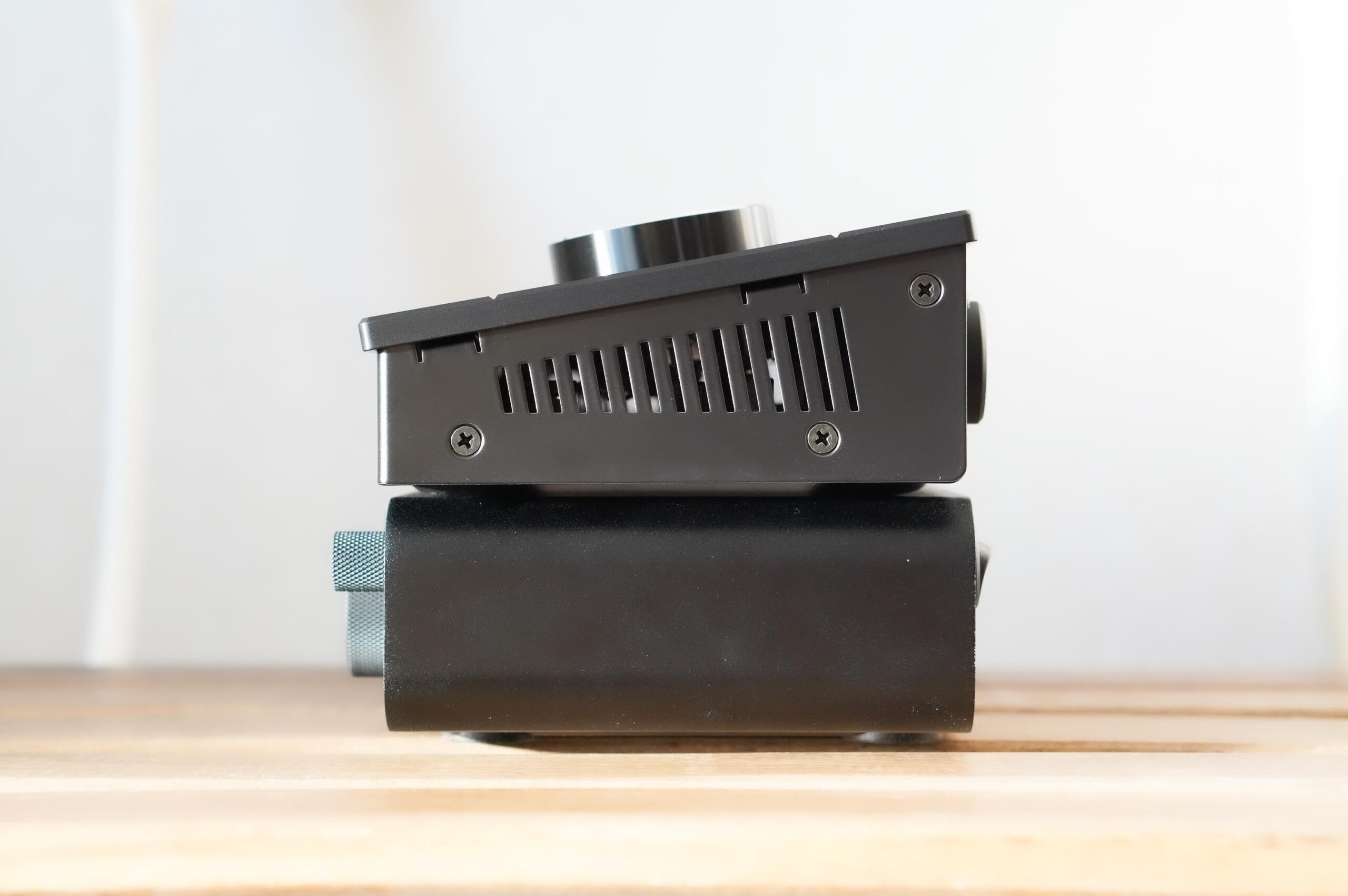
The depth is about the same.
It’s about the same depth, and it’s a standard 2-channel type.
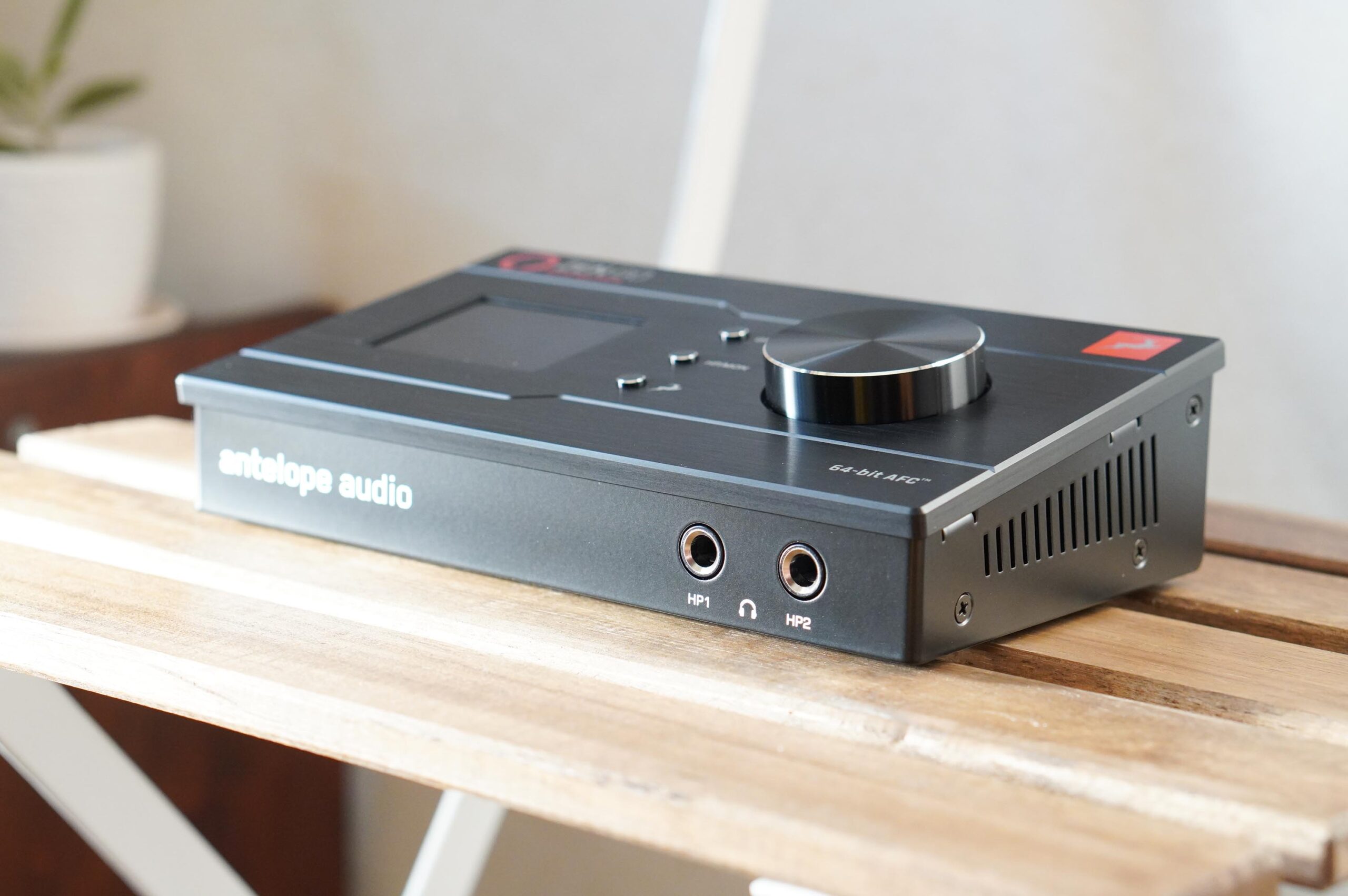
At any rate, the exterior is solid for the price.
It looks more luxurious than the MOTU M2.
The big knob on the top is clickable, and the operability looks pretty good too!
So, let’s try connecting it to the PC right away!
Connect to PC
I’m using a MAC 2020 desktop.
I connect it to this.
Most AIFs don’t need an installer and recognize it right away, but…

ANTELOPE can only be used if the product is properly registered online!
You need to install a dedicated mixer as well, because it has its own plug-in dodging function.
You need to install a dedicated mixer as well.
After about ten minutes of tinkering with the PC side, I was able to get it working.
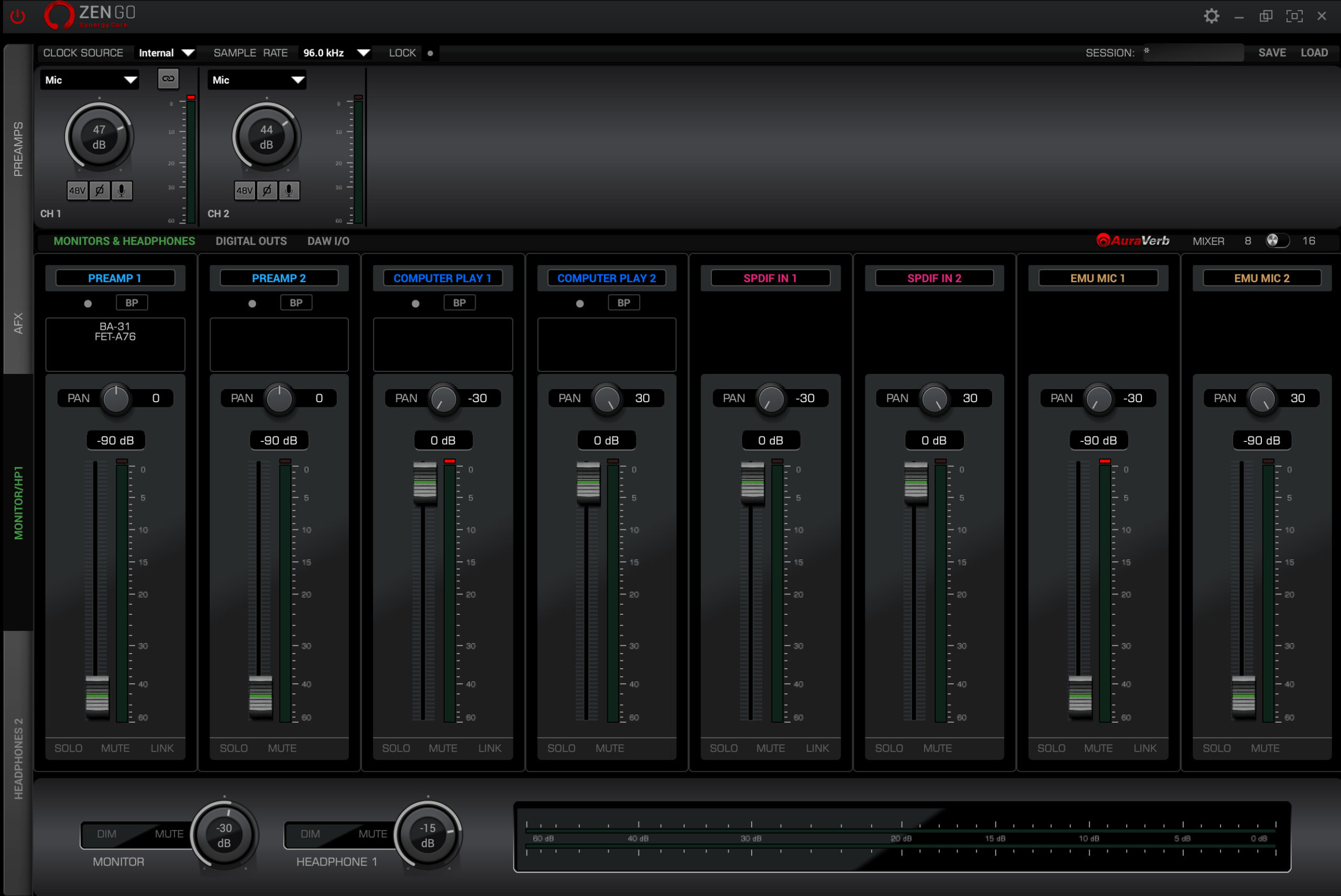
Registration and installation are complete!
The mixer looks like the one from Discrete Synergy Core, but it’s a different design.
You can also use ZEN GO for live streaming(`・ω・´)
Try to listen to the sound
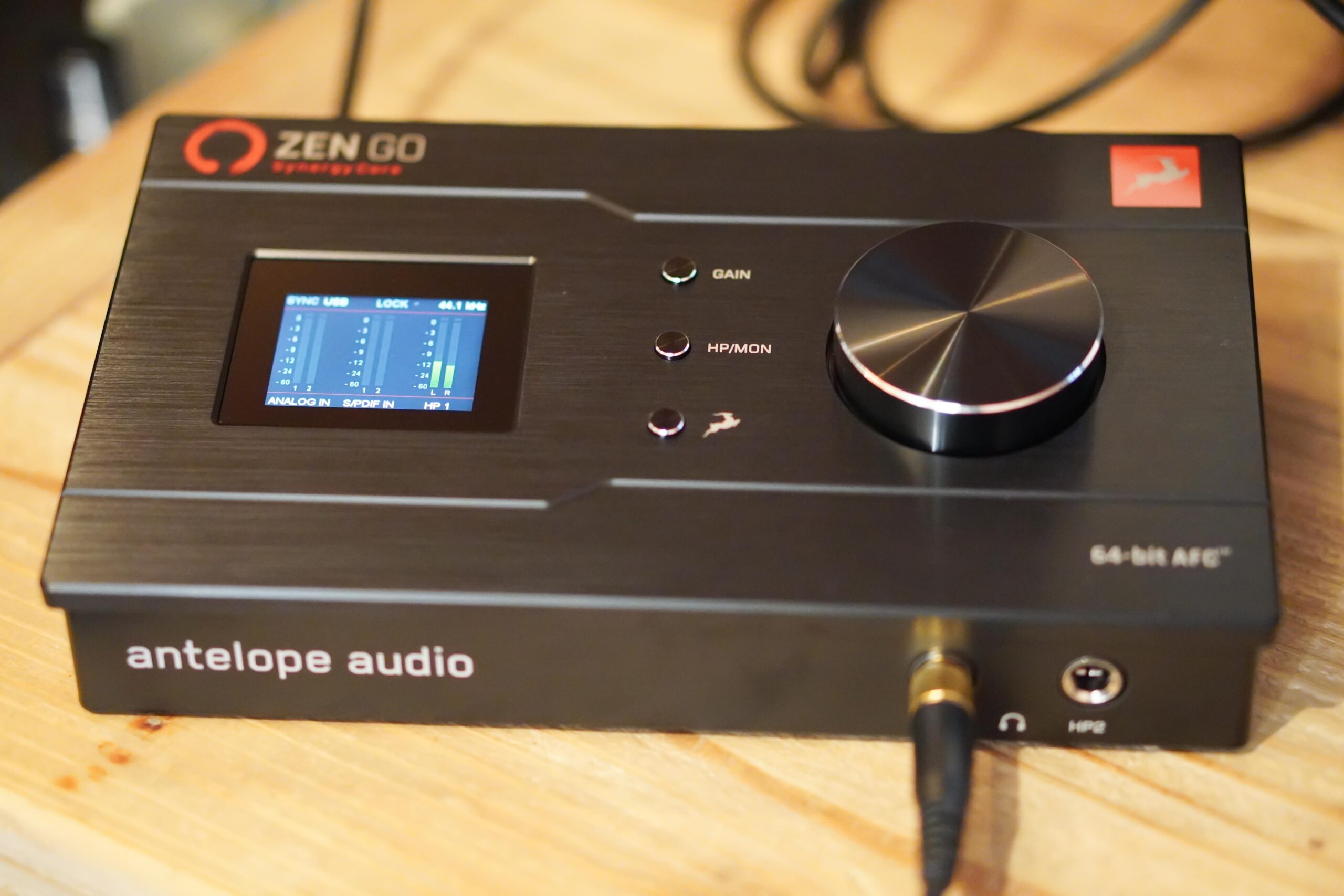
So let’s have a look at what we’ve been waiting for!
Plug in your headphones and click the sound button(`・ω・´)
Yes! Holy shit, it sounds great!
It’s the sound of ANTELOPE!
Unfortunately, I gave away my old Discrete 8 Synergy Core, so I can’t compare it exactly, but I’m sure it’s the sound I used to listen to.
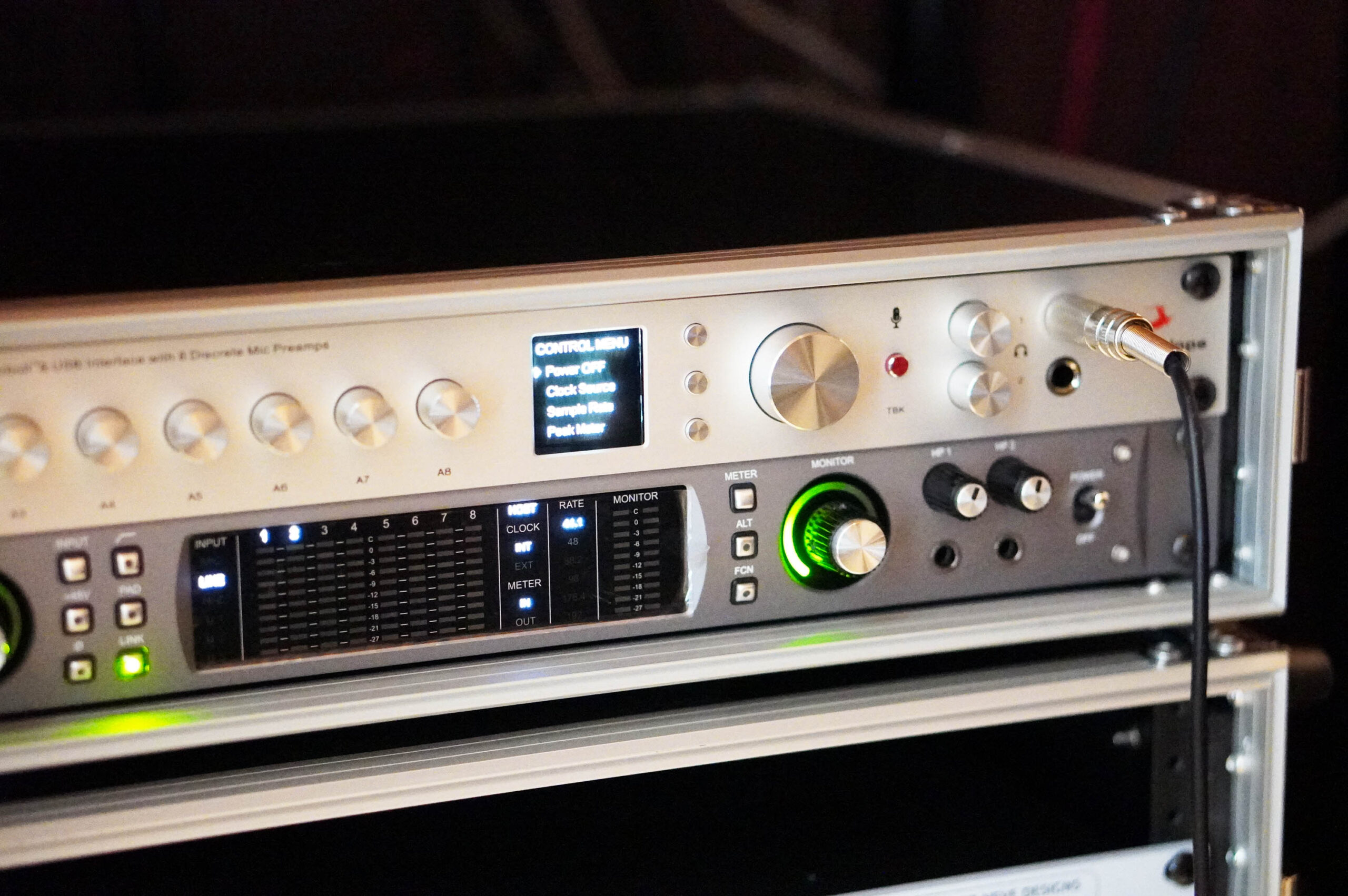
When I compare it with the UA APOLLO X6, the APOLLO has a thicker, tighter, rockier sound.
The ZEN GO is more delicate and a little softer. But the resolution is very high.
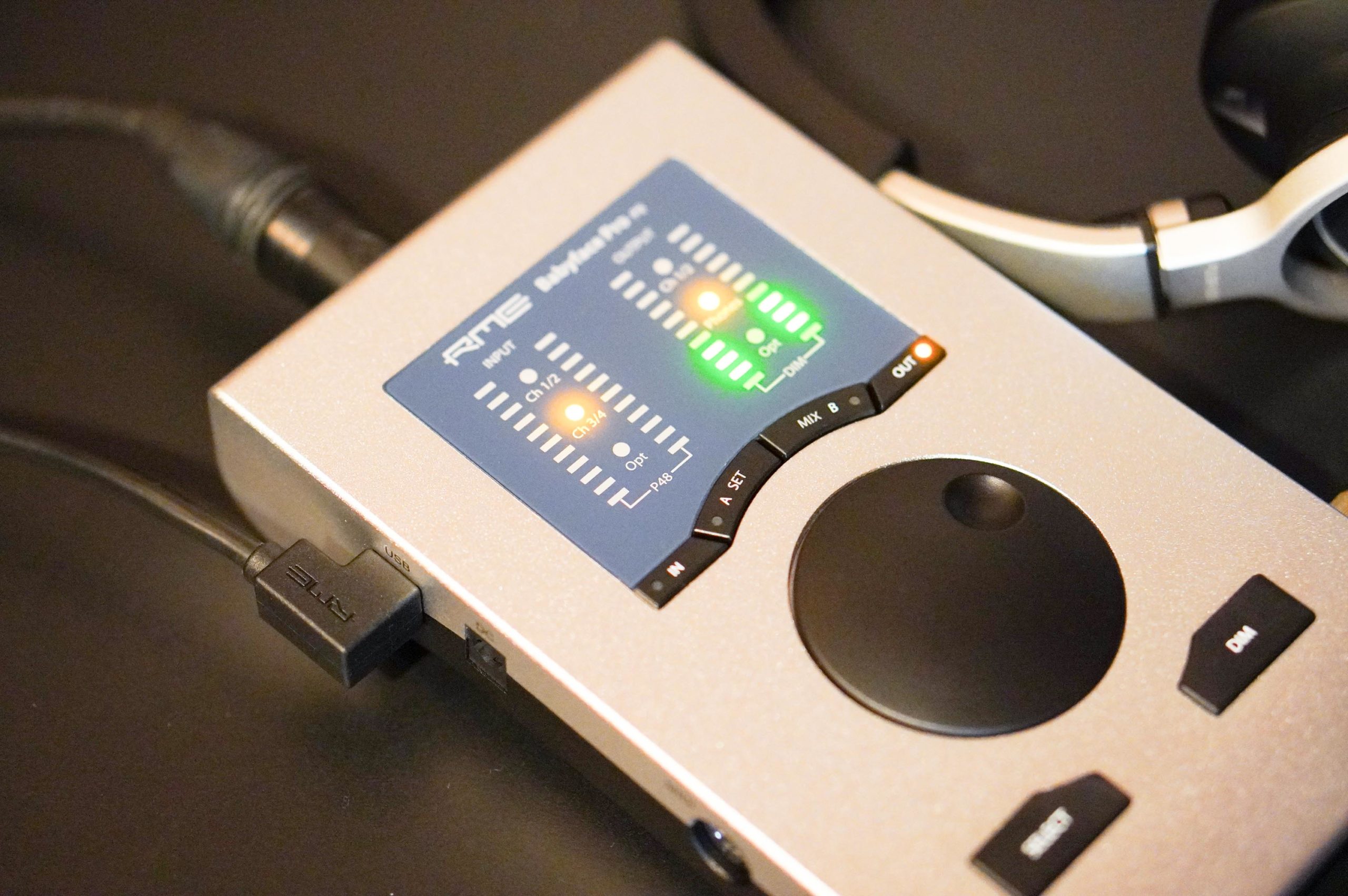
RME has the most monitor-friendly sound after all.
It has a crisp, clear, and serious sound.
ZEN GO is a bit “fizzy”.
It sounds like fine bubbles mixed in, like elegant champagne,…
If you are listening to it, ANTELOPE might be more pleasant.
If you choose it for a ”Computer Music mix”, RME is more understandable.
This is the strength of RME, so it’s not that ANTELOPE is bad.
No offense(`・ω・´)
Hmmm, they are all good after all!!!
I’ll try to record it.
What about the recorded sound?
I did some mic recording to test it out!
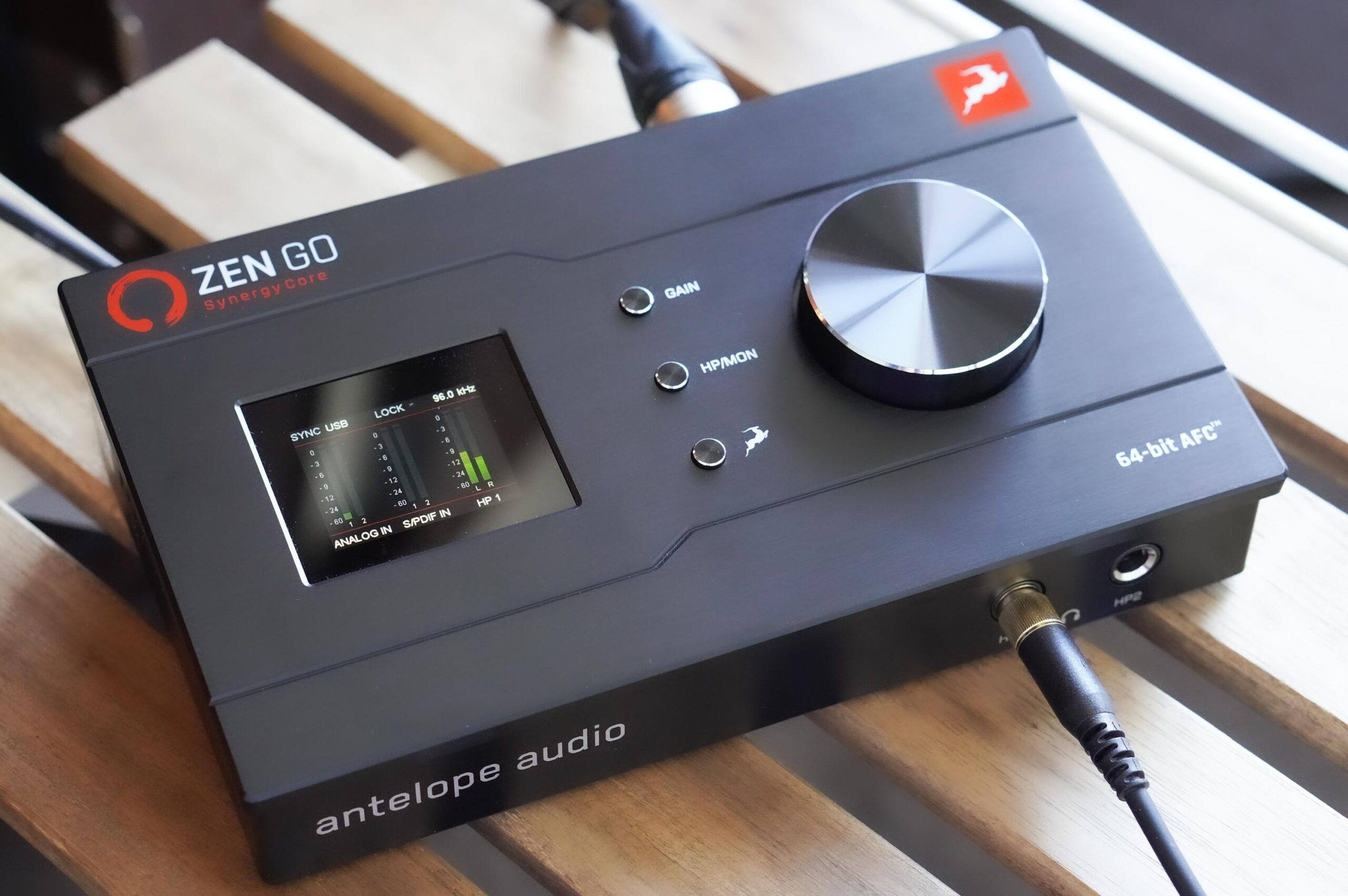
I used a Neuman M149 microphone, as I did in the past when I test recorded Discrete 8 Synergy Core and Baby face pro fs.
This is how you record two tracks of acoustic guitar.
I used Logic X’s supplied loop for the rhythm, and panned the guitar left and right.
No EQ comps or other plug-ins were inserted into the recorded sound.
I just used faders to adjust the volume.
Also, like the Discrete series, the Zen Go can record plug-ins in real time using its built-in chip, so I made a file of that as well.
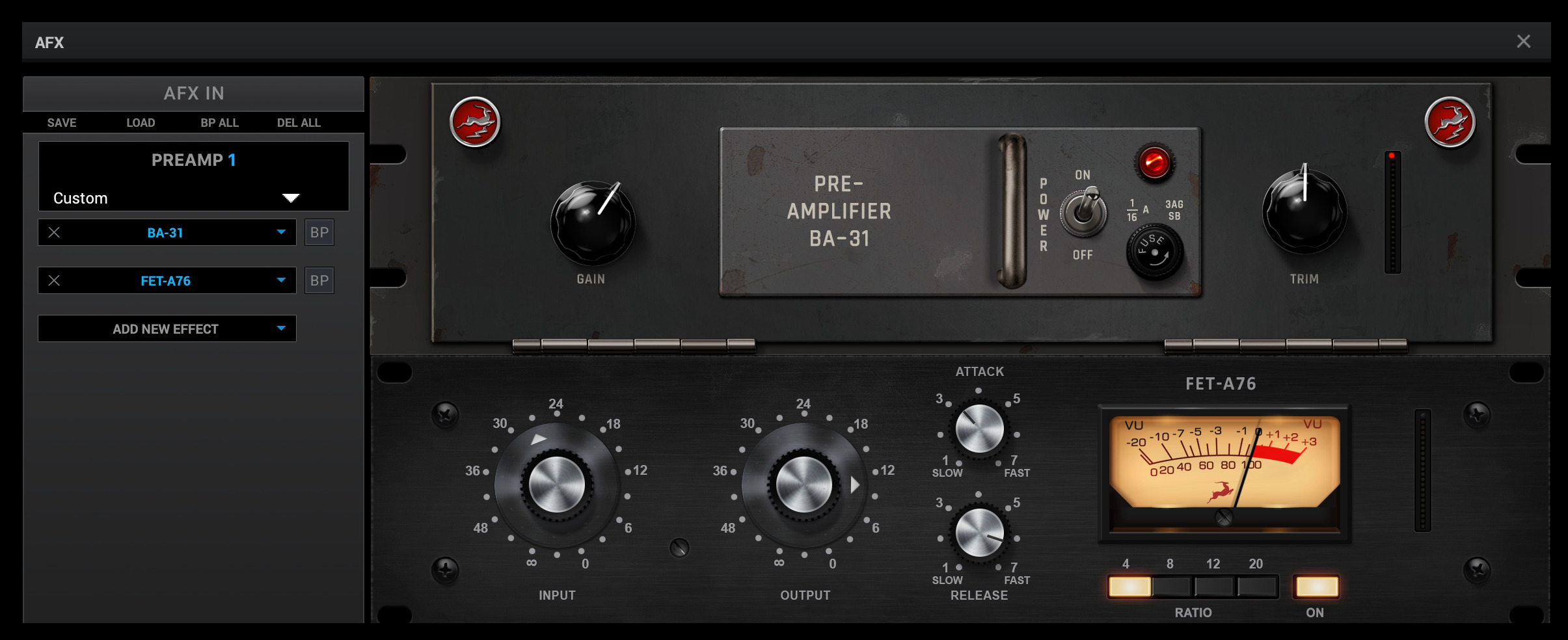
I used the BA-31 mic pre modeling plug-in and 1176 for real-time recording.
So let’s hear the comparison!
ANTELOPE ZEN GO
ANTELOPE ZEN GO+BA31 mic preamp
ANTELOPE ZEN GO+BA31mic preamp+1176comp
ANTELOPE Discrete Synergy Core
ANTELOPE Discrete Synergy Core + BA-31 Preamp
ANTELOPE Discrete Synergy Core + BA-31 Preamp +1176 comp
RME Babyface Pro FS
UNIVERSAL AUDIO APOLLO X
impressions
Wow! They’re all so different!
However, they were all recorded on different days, so there are subtle differences in miking.
The condition of the guitars also changes with the seasons, so I had to take that into account… Which one do you prefer?
Is the ZEN GO more analog than the Discrete Synergy Core? I think it sounds thicker.
Discrete Synergy Core is more elegant and erotic(´⊙౪⊙)۶
If anything, ZEN GO is more like UA APOLLO than Discrete Synergy Core.
However, I feel that UA has a more solid feeling.
RME has a beautiful sound.
It will seem that depending on the texture of the sound you want to create, people will have very different tastes.
ZEN GO looks great when you record plug-ins in real time!
UA can also be transformed by real-time recording.
ZEN GO basically only allows plug-ins to be used for real-time recording.
It’s my fault, but I realized that after I bought it.
ZEN GO basically only allows ANTELOPE plug-ins to be used for real-time recording.

It comes with 37 different effects by default, but you can’t use them on a DAW.
With the Discrete Synergy Core series, I was able to use them on my DAW by purchasing the AFX2DAW software separately.
But apparently, AFX2DAW only supports the Thunderbolt connection, and…
Cannot be used with Zen Go with USB-C connection.
It’s a shame!
However, most of the included effects are guitar amp type.
However, of the 37 effects included, 22 are guitar amp simulations, etc.
I feel the intention of the manufacturer to “create the sound” in the real-time recording stage.
In the first place, ANTELOPE plug-ins are intended to be a little different from UA.
They want to make it a “plug-in specialized for real-time recording”
However, as a user, I would be very happy if I could use it with my DAW( ・ὢ・ )
How many DSP chips are in the ZEN GO?
By the way, the ANTELOPE plug-in does not burden the PC, but runs on the DSP/FPGA chip in the unit.
The Discrete Synergy Core series has two DSP chips and one FPGA chip, but there is no information on how many chips are in the ZEN GO.
I can’t find anything on the official website!
Maybe I’m just missing something, but I can’t find the specs list either( ・ὢ・ )
I wonder if they’ll follow up soon.
I want to know.
Another way to use the ZEN GO plug-in
So basically, ZEN GO can only be used with plug-ins, but apparently it is possible to use plug-ins on the ANTELOPE mixer by changing the routing on the DAW side.
At any rate, it looks like you can use plug-ins in DAW audio files this way!
However, it seems to be quite troublesome.
Think of it as a $600 audio interface?
Thus, ZEN GO has limited use of DSP/FPGA plug-ins, which is one of the selling points of ANTELOPE audio interface.
- Basically, it’s enough to enjoy the change in the texture of the sound by using the real-time recording.
- It takes some time to use plug-ins, but that’s okay.
- You like the sound of ANTELOPE
- Can’t afford to pay 100,000 yen for AIF, but can afford half of it.
- Want to step up from the entry-level AIF
This may be a good choice in such cases.
However, if you are going to spend a lot of money, I think other options are good too.
That said, the sound itself is very good!
Maniacal selection of modeling plug-ins.
ANTELOPE has an interesting selection of models for plug-ins.
I personally like this kind of mania!
But if you’re not interested in racking gear, you probably don’t know about Gyraf Audio.
Currently, UA is by far the major model source for plug-ins.
If you’re looking for plug-ins, you’ll be happier with UA.
Of course, with UA, you can use UAD plug-ins on your DAW as well.
summary
That was my review of the ZEN GO!
Although I wrote something a little negative at the end, I feel that ANTELOPE’s AIF still has a lot of potential.
There are many parts of the AIF that I couldn’t pick up this time review, such as the clock and the ease of use of the mixer software.
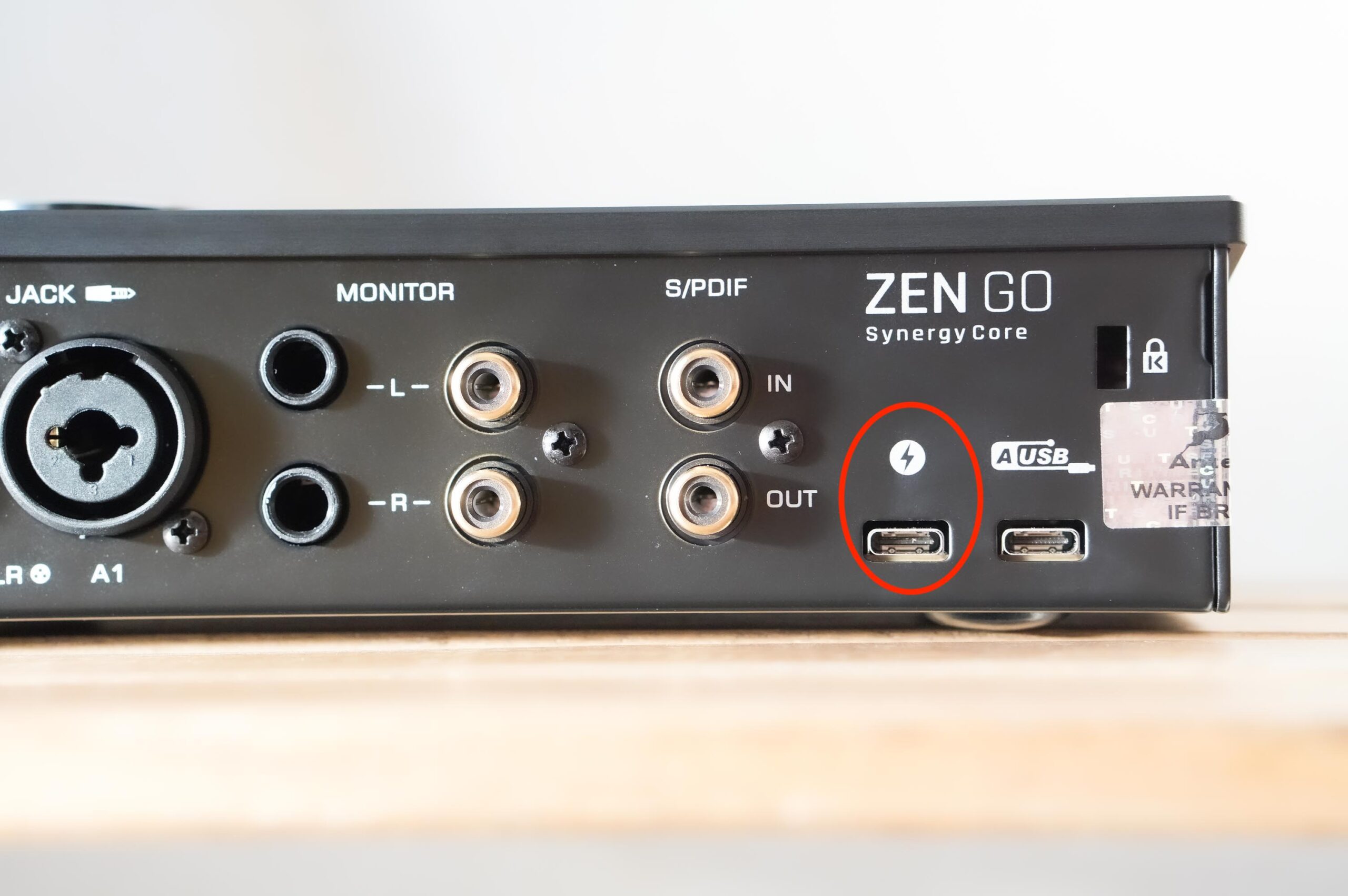
Incidentally, this did not seem to be a Thunderbolt terminal.
That’s my review of ANTELOPE’s new AIF ZEN GO!
Thank you for reading till the end!
